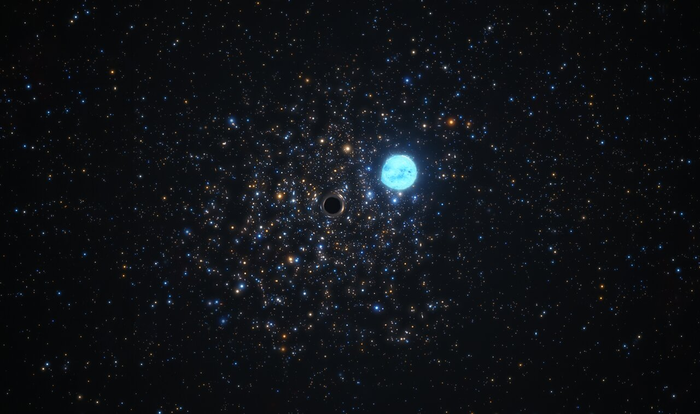Black hole found hiding outside the Milky Way – and it could be the first of many more

A black hole has been found hiding just outside our galaxy – and it could be the first of many just waiting to be found, scientists have said.
The small black hole was found by looking at the way it influenced the movement of a nearby star, scientists said.
That same technique could be a key part of finding other hidden black holes that are lurking in our own Milky Way and other galaxies, the scientists behind it find.
“Similar to Sherlock Holmes tracking down a criminal gang from their missteps, we are looking at every single star in this cluster with a magnifying glass in one hand trying to find some evidence for the presence of black holes but without seeing them directly,” said Sara Saracino from the Astrophysics Research Institute of Liverpool John Moores University in the UK, who led the research.
“The result shown here represents just one of the wanted criminals, but when you have found one, you are well on your way to discovering many others, in different clusters.”
That clue that the newly discovered black hole left behind was the way it seemed to be affecting the motion of the nearby star, which is roughly five times as large as our sun.
Similar, small black holes have been found before by looking for the X-rays that come out as they eat up matter, or the gravitational waves that result when they collide with other black holes. But most black holes do not do either, and are so lying hidden throughout the universe.
“The vast majority can only be unveiled dynamically,” said Stefan Dreizler, a team member from the University of Göttingen in Germany.
“When they form a system with a star, they will affect its motion in a subtle but detectable way, so we can find them with sophisticated instruments.”
By finding more such black holes, scientists hope to be able to compare those younger, smaller ones with their larger and more mature siblings. That could help show how they evolve and grow over time.
A paper describing the findings, which came from observations at the European Southern Observatory’s Very Large Telescope, has been accepted for publication in the Monthly Notices of the Royal Astronomical Society.
Join our commenting forum
Join thought-provoking conversations, follow other Independent readers and see their replies
Comments
Bookmark popover
Removed from bookmarks